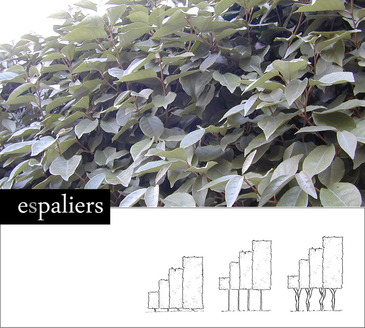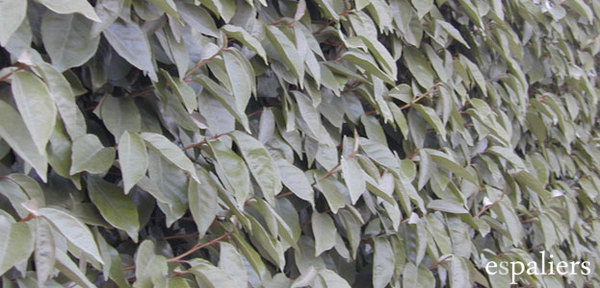
 Terug
TerugElaeagnus ebbingeï
At Espaliers Nursery, the olive willow espalier is grown on its own trunk. The olive willow espalier has the same properties as the olive willow hedge. On trunk, this tree is more sensitive, so we do not recommend it if there is no shelter. The ideal location is on poor soils with the trunk sheltered, but the crown needs ventilation from the wind. It is a tree that tolerates salty sea air very well and is therefore suitable for planting close to the coast. Poor sandy soil is also no problem for the olive willow. It also grows naturally in the dunes.

Additional properties of the espalier willow
The flowers with their sweet scent are attractive to bees and moths. After flowering, berries appear on the tree and are later eaten by birds. The colour palette can be compared to that of the holm oak.
Elaeagnus has a soft grey silver colour with a little more silver in it than the holm oak. The trunk of the Elaeagnus slowly thickens, whereas the crown can produce long shoots, especially in richer soils. A great advantage of this espalier form is that, like the holm oak, it forms few roots. The roots it does form are very modest and go straight to the bottom. The roots do not have the strength to cause problems.
It seems obvious, but until a few years ago, and sometimes still, this tree was offered with a rootstock and a graft. These trees look nice but are not durable. The graft causes problems of intergranulation and at a later age, this causes negative effects and the death of the crown. The non-grafted Elaeagnus espaliers that we grow do not have this problem.
